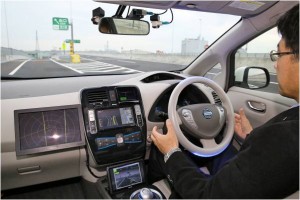Japan has a comparatively long history of driverless cars. Systems were developed in the 1980s where cars would recognise lanes markings on roads and be able to navigate them. Despite the fact that these systems were not introduced to market, various companies have continued to develop their research, such as Subara’s current ‘Eyesight’ technology. Now, as companies in the west like Apple, Volvo and Google (using Lexus SUVs, Toyota’s luxury brand) began to develop test their own driverless cars with prototypes being used in the US, as well as other projects in Europe in the 2010s, Japan is already well placed in this area with years of research experience.
There are a few trials currently planned in Japan, one of them being in Fujisawa City in Kanagawa Prefecture (50km south of Tokyo) and supported by the local government. ‘Robot Taxi’ is a new company set up by Japanese mobile internet firm DeNA and automated vehicle developer ZMP, which will run a driverless taxi trial from 2016, with an initial trial group of 50 local residents connecting their homes with a local shopping centre within a 3km radius. The area has been selected as one with older residents where local train and bus services have been cancelled due to the declining population level in the city, a problem which is a growing feature of Japan’s rural areas.
The automated cars are equipped with GPS, radar and stereovision cameras, although initially for the trial, attendants will sit in the driver’s seat during the journeys in case human intervention is needed. If the Fujisawa trials are successful, there are plans for the cars to be used to transport spectators at the 2020 Games in Tokyo, as well as in rural communities with little or no public transport. With one of the fastest-ageing populations in the world, conditions are ideal for the introduction of self-driving vehicles in Japan, where the country is also seeing a rise in the number of accidents involving older drivers.
The plan is also to offer a less expensive service than traditional taxis. Looking at manned taxis, 70% of the cost is actually down to driver labour, which replaced with artificial intelligence will mean significant cost reductions in the long term, particularly important in an era of difficult finances for local government with increasingly difficult tax resources due to Japan’s ageing and shrinking population. Officials in Fujisawa, which aims to become Japan’s first sustainable “smart town”, said the trial would be the first using the driverless vehicles on local roads, and with residents as passengers.
Another city which is currently rolling out such a test scheme is Sendai City in Miyagi Prefecture where the focus will be on implementing such a system for an area at risk of earthquake and tsunami. The trial will also be used on roads and routes where schools will be within the area of the project, for an emergency transport system in the event of natural catastrophe.
Japan’s prime minister Shinzo Abe recently spoke publicly in favour of self-driving cars. “I can tell you that in 2020 Tokyo, self-driving cars will be running around, and you will be able to use them to move around,” he said in October 2015.


